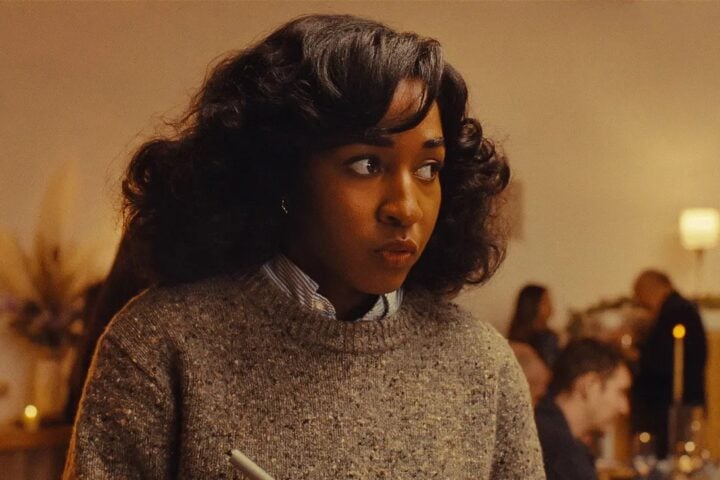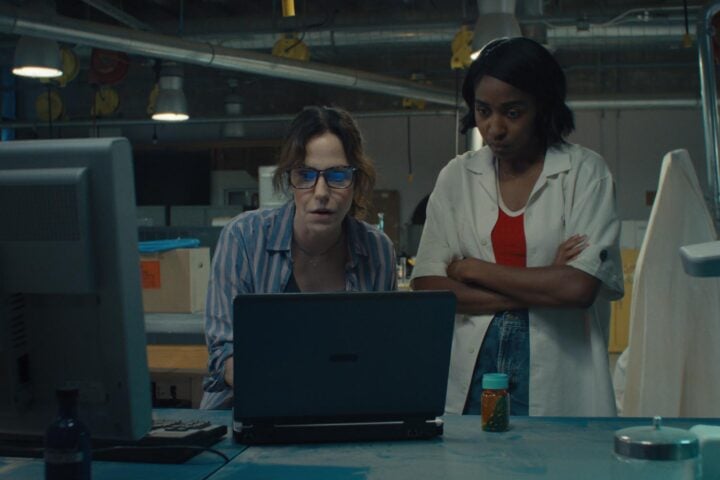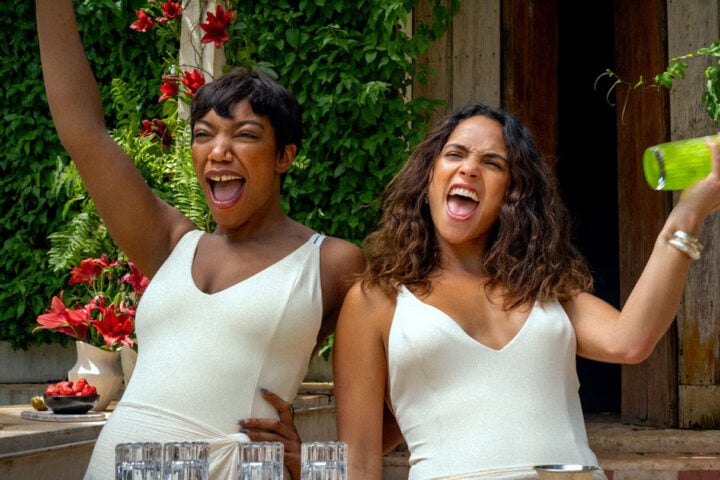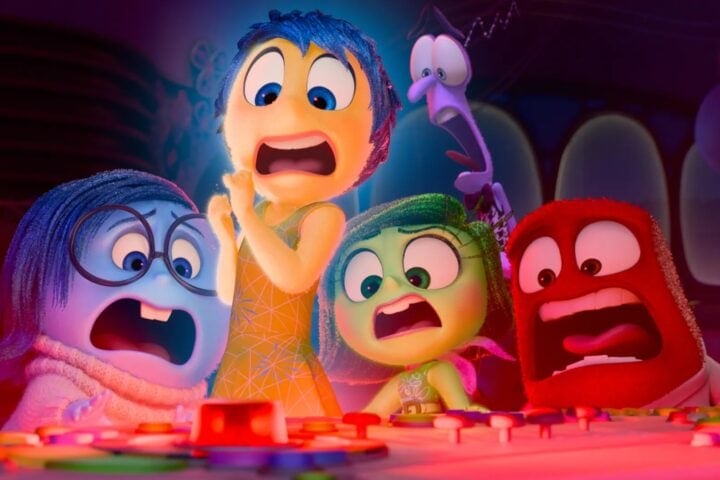Riley (Kensington Tallman), the little girl audiences were first introduced to in 2015’s Inside Out, is navigating typical teenage life in Inside Out 2. Early in the film, she gets invited to an advanced hockey tryout at her soon-to-be-new high school with her two besties, only to find out that they aren’t going to the same school, and that the badass jock girls at the new school are bigger, stronger, and cooler. While it’d be nice if she knew how to deal with that in an emotionally mature way, unfortunately, she’s literally got a lot more on her mind.
When we last saw her in the original film, Riley had one core group of anthropomorphic emotions running around the crystalline control center in her head, guiding her decisions: Joy (Amy Pohler), Sadness (Phyllis Smith), Anger (Lewis Black), Disgust (Liza Lapira, replacing Mindy Kaling), and Fear (Tony Hale, replacing Bill Hader). After the big red puberty alarm goes off, though, the control center comes under new management, with Anxiety (Maya Hawke) suppressing the old emotions and taking the lead with her new, less stable co-workers: Envy (Ayo Edebiri), Embarrassment (Paul Walter Hauser), Ennui (Adèle Exarchopoulos), and Nostalgia (June Squibb). That’s the brain of a 13-year-old girl, all right.
In probably the most overt artistic choice ever made in a Pixar film, Inside Out 2’s theme is blared in big bold print early on as the wrecking crew that makes room in the control center for all the new emotions puts up a giant placard that reads “puberty is messy.” There are a thousand ways that can manifest for a young girl like Riley, and maybe if Pixar’s film had taken place over a longer period than just a few days at a hockey training camp, we’d be able to see that mess with a bit more nuance. Instead, Inside Out 2 is left to contend with the deeply specific and limited range triggered by what would seem to be Riley’s very first conflict of social interests.
Still, Inside Out 2 creatively mines plenty of material from even this thin slice of life, especially from the visual side. Well-timed comedic reactions feed gently into the exploration of emotions (Sadness having the tiniest little crush on Embarrassment is delightful), and there are some fantastic running gags stemming from Riley’s cringeworthy childhood obsessions. Also, one has to respect the sheer cinephilic madness of casting French starlet Adèle Exarchopoulos to play Ennui as a depressed French teenager who won’t get off her phone.
But the film is at its most visually sumptuous when immersing us in Riley’s burgeoning belief systems, a new addition to her mind that’s portrayed as an enormous, beautifully rendered chamber full of fluorescent strands of light, culminating in a single blossom above representing her sense of self. Once Riley’s fragile teenage emotions take the wheel, though, that blossom becomes frayed, the product of a toxic pool infected with intrusive thoughts.
That visual complexity, though, isn’t matched by the actual journey the core emotions take back to the forefront of Riley’s mind. It can’t help but feel like a more convoluted retread of the first Inside Out’s abstract buddy comedy, but without the poignancy of the Bing Bong storyline or the subtle realization of the role of Sadness in our lives. Instead, and despite Poehler pouring heart and soul into her performance, the plot is still trying to sift through the myriad reasons why, as we learned by the end of the first film, having Joy lead the way all the time is a problem.
However, it’s clear that the brunt of the film’s focus is on Anxiety, portrayed not as a villain so much as a walking, talking frayed nerve afraid of ceding a single inch of Riley’s thoughts to the idea that the future and the world at large may love her just as she is. Despite her upbeat vocal tone, there’s such a sad, Plathian fatalism to Hawke’s performance. Anxiety is full of love for her human charge and the other emotions—even Joy—even as she recognizes that none them have the ability to save Riley from the worst-case scenarios being drawn up in her mind.
It’s a tightrope walk on the part of Hawke and screenwriters Dave Holstein and Meg LeFauve to keep Anxiety from being a full-fledged antagonist, even as she turns Riley’s most important moments into poison. But, then, for most adults, a struggle with Anxiety is a familiar thing, making this character the most relatable thing to ever happen to a Pixar film.
Since 2001, we've brought you uncompromising, candid takes on the world of film, music, television, video games, theater, and more. Independently owned and operated publications like Slant have been hit hard in recent years, but we’re committed to keeping our content free and accessible—meaning no paywalls or fees.
If you like what we do, please consider subscribing to our Patreon or making a donation.





